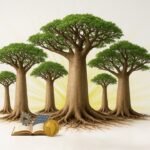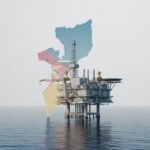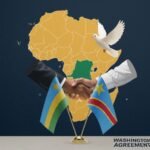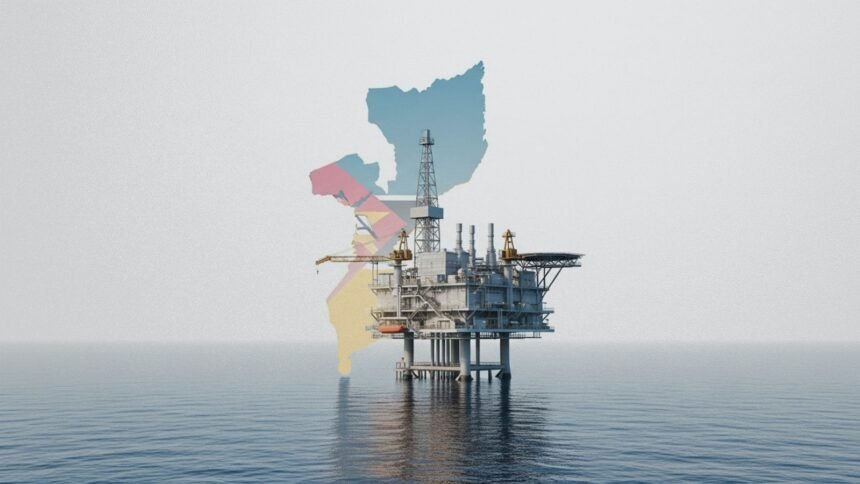Introduction: Echoes of Ubuntu in Africa’s Economic Awakening
In the expansive tapestry of Africa’s economic narrative, where the enduring spirit of ubuntu—the profound interconnectedness that binds communities in mutual support—meets the relentless currents of global change, Mozambique stands as a compelling symbol of potential and perseverance. Nestled along the southeastern coast, with its landscapes shaped by the flowing Zambezi River and the vast Indian Ocean horizons, this nation embodies the continent’s intricate blend of rich natural endowments and formidable developmental hurdles. As Africa navigates a global economy characterized by shifting trade alliances, fiscal pressures, and technological disruptions, Mozambique’s story extends beyond its borders, offering insights into collective Pan-African strategies for growth. At the core of this evolution lies the energy sector, particularly the ambitious liquefied natural gas (LNG) initiatives in the Rovuma Basin, which represent more than mere extraction endeavors; they signify a deliberate shift toward economic diversification, regional collaboration, and long-term sustainability. This article explores the broad spectrum of financial opportunities across Africa, using Mozambique as a central perspective to examine the continental outlook, investment patterns by sector, geopolitical trade interactions, ongoing challenges, and forward-looking prospects. Through this exploration, we uncover how Mozambique’s energy-driven revival can inspire a unified Pan-African approach that emphasizes fairness, ingenuity, and shared advancement in an era of uncertainty.
The African Economic Tapestry: Weaving Resilience Amid Global Storms
Africa’s economic storyline in the mid-2020s is one of measured hope intertwined with persistent global challenges, reflecting a continent that continues to demonstrate remarkable adaptability. For Sub-Saharan Africa, growth is anticipated to remain stable at approximately 4.1 percent in 2025, building on a similar rate from the previous year, with a slight uptick to 4.4 percent projected for 2026. This stability stems from enhanced macroeconomic management in several key nations, including efforts to stabilize currencies and control inflation, even as external factors such as fluctuating commodity prices and geopolitical tensions exert downward pressure. Broader African growth is estimated at around 3.9 percent for 2025, highlighting variations across regions: East Africa benefits from robust infrastructure development and a tourism recovery, while West Africa contends with energy shortages and political instability. Agriculture, which sustains over 60 percent of the workforce, serves as a foundational pillar, with improved yields in areas like East and Southern Africa mitigating the impacts of erratic weather patterns driven by climate change. However, the energy domain—spanning traditional fossil fuels and emerging renewables—stands out as a critical driver, expected to draw substantial capital inflows, potentially surpassing $100 billion per year by the end of the decade, as nations seek to harness untapped resources for both domestic needs and export revenues.
Investment trends across sectors illustrate a strategic push toward diversification, moving beyond historical reliance on raw commodities. The energy field leads prominently, with significant projects in natural gas, oil, and renewables attracting consortia from around the world; for instance, solar and wind initiatives in North and East Africa are gaining momentum amid global demands for clean energy transitions. Mining follows closely, propelled by the surging need for critical minerals essential to electric vehicles and renewable technologies—cobalt from the Democratic Republic of Congo, lithium from Zimbabwe, and graphite from Mozambique represent just a fraction of this boom. Agriculture, often overlooked in favor of extractives, is witnessing renewed interest through large-scale agribusiness operations in countries such as Ethiopia, Nigeria, and Tanzania, where investments in irrigation, mechanization, and value-added processing aim to enhance food security, reduce import dependence, and boost export earnings. These sectors interconnect dynamically: energy infrastructure enables efficient agro-processing facilities, mining operations fund educational and health improvements, and agricultural advancements support rural electrification, creating a reinforcing loop that underpins broader industrialization efforts.
On the geopolitical front, Africa’s trade landscape is undergoing a profound reconfiguration, fostering greater autonomy amid multipolar influences. The European Union, as a longstanding partner, continues to channel significant resources through frameworks like the Global Gateway, committing billions to sustainable infrastructure, including green energy networks stretching from Morocco’s solar farms to South Africa’s wind corridors. This relationship emphasizes regulatory alignment and environmental standards, though it sometimes conflicts with local priorities for rapid development. The United States, through mechanisms such as the African Growth and Opportunity Act—currently under renewal discussions—focuses on enhancing market access for non-oil exports like textiles and minerals, while initiatives like the Partnership for Global Infrastructure and Investment prioritize digital connectivity and health resilience; however, total U.S.-Africa trade volumes hover around $70 billion, reflecting a more targeted rather than comprehensive engagement. China, with its expansive Belt and Road Initiative, dominates the scene through over $200 billion in cumulative trade and investment, constructing vital arteries such as ports, highways, and railways, often backed by resource-linked loans; this model accelerates connectivity but raises concerns about long-term debt burdens and economic dependencies. Meanwhile, Gulf nations, including Qatar and the United Arab Emirates, are carving out a distinctive niche with investments exceeding $100 billion by 2025, favoring flexible, low-conditionality funding for renewables, logistics, and tourism, thereby positioning themselves as pivotal intermediaries between traditional fossil-fuel economies and emerging green paradigms. This diverse array of partnerships empowers African nations to assert greater agency, particularly through the African Continental Free Trade Area (AfCFTA), which aims to elevate intra-African trade to levels that diminish overreliance on external markets and promote value addition within the continent.
Mozambique’s Economic Mosaic: From Zambezi Currents to Rovuma Flames
Positioned within this vibrant continental framework, Mozambique exemplifies Africa’s economic dichotomies—abundant resources juxtaposed against infrastructural and institutional constraints. Emerging from a history of civil strife and colonial legacies, the nation’s economy has shown resilience, achieving growth rates around 5 percent in recent years prior to the recent slowdowns, driven by sectors such as services, remittances from its diaspora, and budding manufacturing hubs. Projections indicate a moderation to 2.1 percent in 2024, rising modestly to 2.5 percent in 2025 and 3.5 percent in 2026, with a potential surge to over 11 percent by 2030 as major projects come online. Inflation, which peaked at 7 percent in 2023, is expected to ease to 3.2 percent in 2024 before climbing slightly to 4.9 percent in 2025 amid external pressures. The northern province of Cabo Delgado, renowned for its ruby mines and vast offshore gas reserves estimated at 100 trillion cubic feet, is central to this trajectory, promising to reshape Mozambique from a primarily agrarian society into a regional energy exporter.
The energy sector’s transformative power is evident in Mozambique’s strategic pivot, blending fossil fuels with renewable sources to create a balanced portfolio. LNG projects in the Rovuma Basin are set to position the country among global leaders, with production capacities aiming for tens of millions of tons annually. Complementing this are hydropower assets like the iconic Cahora Bassa Dam, which already generates significant electricity for export, and expanding solar installations in the arid interiors, capitalizing on abundant sunlight to address domestic energy deficits where access rates remain below 50 percent. Agriculture, which engages nearly 70 percent of the population, interlinks with energy through initiatives such as electrified farming cooperatives in the fertile Limpopo and Zambezi valleys, enhancing the productivity of cash crops such as cashews, cotton, and tobacco. Mining adds another layer, with explorations in graphite, heavy mineral sands, and rare earths feeding into global supply chains for batteries and electronics, while generating revenues to bolster social services. Mozambique’s role within the Southern African Development Community (SADC) amplifies these efforts, as it exports power to neighboring Zambia and Zimbabwe, fostering an interconnected energy ecosystem that supports industrial growth across borders and aligns with Pan-African visions of unity.
Energizing the Future: The LNG Renaissance and Sectoral Synergies
Central to Mozambique’s economic revival is the LNG saga—a tale of interruption and renewal that underscores the sector’s pivotal role. The $20 billion Mozambique LNG project, located on the Afungi Peninsula, was paused in 2021 following insurgent attacks that disrupted operations and eroded confidence. Recent developments, including the formal lifting of force majeure after agreements with the government on revised terms, signal a turning point, with construction anticipated to resume imminently and initial shipments targeted for the first half of 2029. This timeline reflects a four-and-a-half-year delay and additional costs of $4.5 billion. Yet, the project’s reactivation promises substantial rewards: at full capacity of up to 43 million tons per year, it could generate revenues exceeding $50 billion over two decades, funding critical infrastructure like roads, schools, and hospitals while creating thousands of jobs in construction, logistics, and maintenance.
These energy advancements create ripple effects across sectors, enhancing synergies that drive holistic development. In agriculture, reliable power from LNG and hydropower enables advanced irrigation systems and cold storage facilities, reducing post-harvest losses and elevating yields in key regions, thereby strengthening food security and export competitiveness. Mining operations benefit from stable energy supplies, enabling efficient extraction and processing of minerals such as graphite, which are vital to the global shift to electric mobility. On a Pan-African scale, Mozambique’s gas resources could underpin the AfCFTA’s ambitions by supplying affordable energy to industrial zones in neighboring countries, such as fertilizer plants in Tanzania or manufacturing centers in South Africa. The integration of renewables—through hybrid models combining gas turbines with solar panels—ensures environmental considerations are addressed, attracting investment from partners keen on low-carbon pathways. This multifaceted approach not only diversifies Mozambique’s economic base but also embeds it within a continental framework of mutual benefit, where the flames of Rovuma illuminate opportunities from the Sahel to the Cape.
Global Entanglements: Navigating Trade and Investment Currents
Mozambique’s prospects are deeply intertwined with global dynamics, where trade and investment flows dictate the pace of progress. The European Union maintains a substantial presence, directing funds toward sustainable energy and infrastructure under initiatives like the Global Gateway, which has pledged over €150 billion continent-wide, including upgrades to Mozambican ports that facilitate LNG exports. This partnership prioritizes green standards and human rights, though it occasionally imposes regulatory hurdles that delay implementation. The United States contributes through loans and technical support for LNG security, aligning with broader goals to counterbalance other influences. Yet, its overall trade engagement with Africa remains around $70 billion, focusing on strategic sectors rather than broad-based exchanges.
China’s involvement is particularly pronounced, with investments surpassing $10 billion in Mozambican infrastructure, such as bridges and railways that streamline resource logistics; this resource-for-infrastructure paradigm expedites development but necessitates careful management to avoid fiscal strains. Gulf states offer a complementary model, injecting over $5 billion into renewables and logistics without stringent geopolitical constraints, and emphasizing projects such as off-grid solar solutions and hydrogen exploration that align with Mozambique’s hybrid energy strategy. Within this multifaceted arena, Mozambique utilizes the AfCFTA to negotiate advantageous terms, exporting gas to Asian markets while importing machinery from Europe, cultivating a trade philosophy centered on African-led value creation and reduced vulnerability to external shocks.
Shadows on the Horizon: Challenges to Sustainable Ascendancy
Despite these promising avenues, Mozambique’s journey is shadowed by significant obstacles that mirror broader African dilemmas. Security threats in Cabo Delgado persist, with militant groups exploiting local discontent over unequal resource distribution, leading to the displacement of communities and deterring investments. Allegations of human rights violations by security forces protecting project sites further complicate matters, prompting international scrutiny and potential funding withdrawals. Fiscal challenges are acute, with public debt exceeding 100 percent of GDP, diverting scarce resources from education and healthcare; corruption issues, including past scandals involving undisclosed loans, erode public trust and hinder effective governance. Climate risks exacerbate these vulnerabilities—frequent cyclones devastating coastal infrastructure and agricultural lands contribute to poverty rates above 60 percent in rural areas, widening inequalities.
Continent-wide, similar issues prevail: fiscal constraints from declining aid, volatile commodity markets, and a burgeoning youth population straining employment opportunities. In Mozambique, overcoming these requires robust, inclusive policies—ensuring community involvement in LNG revenue sharing, implementing stringent anti-corruption measures, and pursuing green financing options such as debt-for-nature swaps—to turn potential pitfalls into foundations for enduring stability.
Dawn of a New Era: Prospects for Inclusive Transformation
Looking ahead, Mozambique’s outlook radiates with possibilities for profound change, particularly as the energy sector matures. With LNG operations ramping up, GDP growth could accelerate to 7 percent by 2030, unlocking $80 billion in investments that blend transitional gas infrastructure with forward-thinking hydrogen and expanded hydropower capacities reaching 14 gigawatts. This integrated strategy—leveraging gas as a bridge to renewables—establishes Mozambique as a key player in Africa’s clean energy export landscape, supplying decarbonization needs in Europe and fueling industrialization in Asia.
Pan-African integrations promise even greater synergies: envisioned pipelines to Zimbabwe, solar grids linking Malawi, and collaborative agribusiness ventures under the AfCFTA could integrate Mozambique into thriving regional value chains. Technological innovations, including digital platforms for mining efficiency and AI-enhanced agricultural forecasting, have the potential to integrate 2 million young people into the formal economy, alleviating migration pressures and fostering demographic dividends. By enforcing local content policies that mandate 40 percent national participation in projects, benefits permeate to underserved populations, embodying ubuntu through equitable wealth distribution. In the global context, as multipolar trade evolves, Mozambique’s strategic positioning—through sovereign wealth mechanisms and climate adaptation funds—ensures that its resources empower its citizens rather than external entities.
Conclusion: Forging Unity in Diversity—A Pan-African Imperative
Mozambique’s energy forefront, drawing from the depths of Rovuma to international arenas, captures the essence of Africa’s economic interplay: opportunities shadowed by risks, yet illuminated by collective resolve. By harnessing LNG’s momentum alongside renewable innovations, it paves the way for Pan-African advancement, where sectoral dynamism, geopolitical trade balances, and the triumphant navigation of challenges converge in shared upliftment. This resurgence is not solitary but a beacon for the continent—from the oil fields of Nigeria to the solar expanses of Algeria—affirming that authentic prosperity arises from solidarity, justice, and bold foresight. As Mozambique ascends, it calls upon fellow nations to intertwine their paths into a resilient fabric of common destiny, resonating across the birthplace of humankind.










